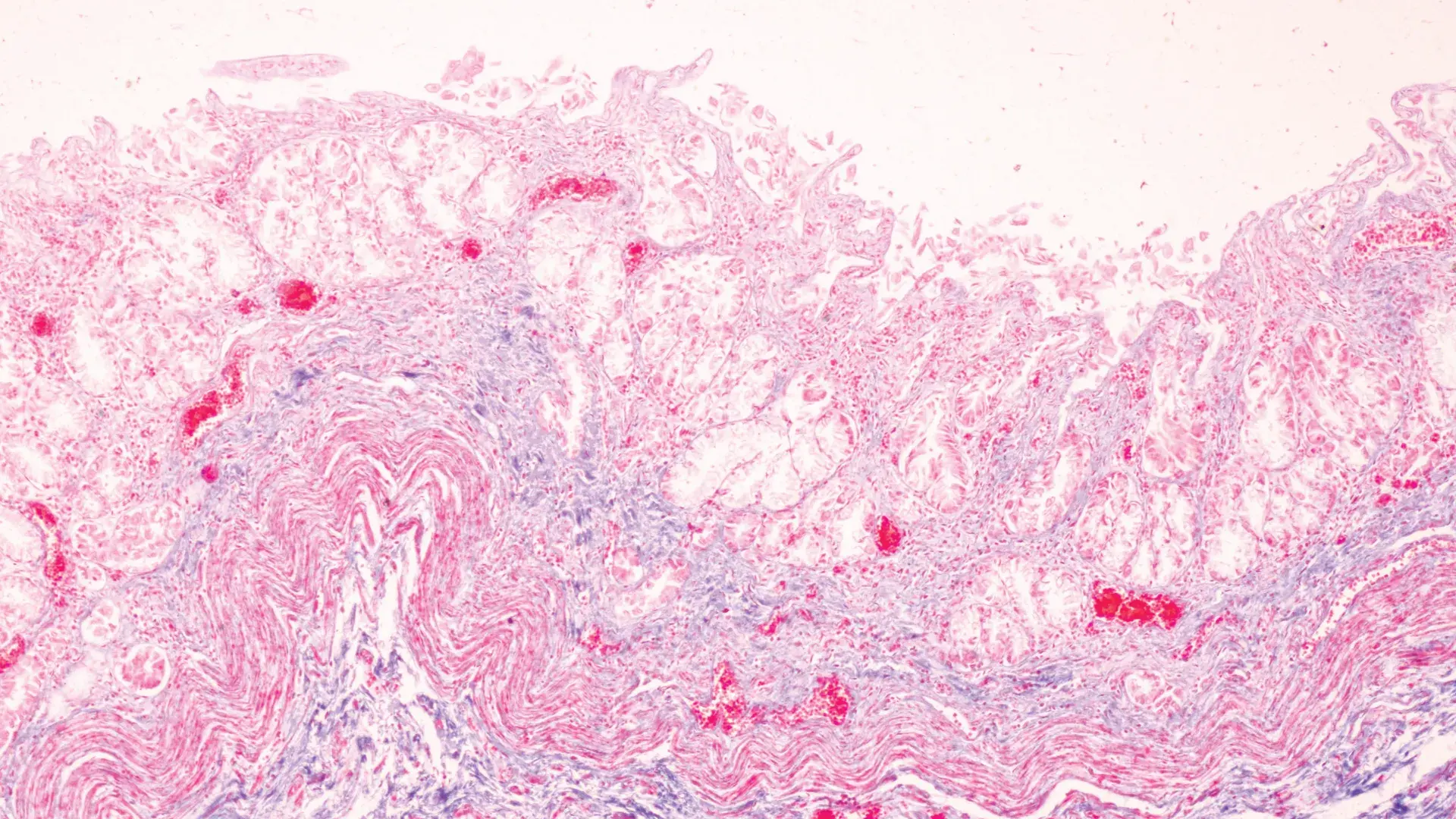4 Questions On NAD/NADH Testing Answered
Unlocking the Secrets of Cellular Energy
5 min read
![]() Dr. Chris Meletis, ND
:
March 3, 2020 at 2:35 PM
Dr. Chris Meletis, ND
:
March 3, 2020 at 2:35 PM

Intestinal barrier function is regulated by tight junctions, which play an important role in the passage of ions, water, and molecules through the intestinal walls. However, when intestinal epithelial barrier function becomes impaired—otherwise known as impaired intestinal permeability or leaky gut—these tight junctions do not function properly. This allows both large and small molecules such as food particles that are normally unable to cross the intestinal epithelial barrier to diffuse from the intestinal lumen into the blood. This systemic spread of these molecules predisposes to systemic complications including food allergies and food intolerances, as well as the development of autoimmune diseases.1
Endurance athletes competing in long-distance events such as marathons and triathlons commonly experience gastrointestinal (GI) discomfort.2 It is estimated that 30-65% of long-distance runners suffer from GI symptoms associated with exercise such as nausea, vomiting, abdominal cramps, and the urge to have a bowel movement.3 One important mechanism thought to be involved in this increased incidence of gastrointestinal complaints among athletes is increased intestinal permeability.4
Although moderate exercise is associated with decreased intestinal permeability and many benefits to health, long periods of high-intensity exercise have the opposite effect. Strenuous exercise reduces intestinal barrier integrity, leading to chronic inflammation.5 This may in part explain why people who persistently participate in strenuous exercise for longer duration have similar mortality rates as individual who are sedentary.5
Heat stress and oxidative damage during strenuous exercise disrupt tight junction proteins.6 Furthermore, reduced splanchnic blood flow during intense exercise may also cause injury to the intestinal epithelial cells that line the gastrointestinal tract.2 High-intensity exercise increases blood flow to active muscles, the cardiopulmonary system, and skin in order to meet the increased need for oxygen and nutrients.4 This necessary diversion of blood flow markedly reduces the gut’s blood supply and leads to leaky gut.4
This impaired gut barrier function increases diffusion of large and small molecules through the intestinal lumen. Furthermore, the human gut contains large numbers of lipopolysaccharide (LPS) endotoxins. The disruption in tight junction proteins during intense exercise results in increased translocation of these endotoxins into systemic circulation.7 Elevated circulating LPS concentrations in athletes correlate with GI symptoms such as nausea, vomiting, and diarrhea.2 Increased permeability and the resulting circulating endotoxins could also affect physical performance or slow recovery rates.2
Read More: Leaky Gut—How and Why it Occurs
Increased intestinal permeability is also thought to lead to food intolerances.8-10 This means that athletes who are consuming “healthy” foods such as whey, casein, ingredients in protein drinks, and even fruits and vegetables may in reality be feeding their leaky-gut-induced food sensitivities. Food intolerances can also lead to increased intestinal permeability,10 creating a vicious cycle whereby intense exercise results in leaky gut and consuming sensitive foods exacerbates the already impaired gut barrier function. This is why it is critical to test for specific food intolerances while patients are engaged in moderate to intense physical activity. They can then avoid the offending foods while at the same time adding probiotics and L-glutamine to their regimens to assist with healing the gut barrier.
Athletes are exposed to environmental toxins on two levels. Participating in outdoor sports leads to increased exposure to airborne pollutants while indoor exercise can increase exposure to off gassing from construction materials in gyms, as well as yoga and pilates mats. Even some dumbbells and other exercise equipment are labeled with warnings that they contain toxic substances. Routine testing of patients with an environmental pollutant panel can identify elevated levels of benzene, paraben, phthalates and many more health and performance robbing toxins.
Exposure to some of these environmental pollutants are associated with increased intestinal permeability. Particulate matter from air pollution contaminates food and is ingested in the diet. One group of researchers found that ingestion of particulate matter increased small intestinal permeability, which in turn produced an inflammatory response.11 Another group of researchers found that particulate matter from air pollution damaged gut barrier function by rearranging tight junction proteins.12 Furthermore, the increased intestinal permeability found in athletes may lead to the diffusion of toxins such as parabens, benzene, and phthalates from the intestines into the systemic circulation.1
Outdoor exercise also exposes athletes to pollen. Individuals who are sensitive to pollen allergens can experience cross-reactivities with certain foods. For example, approximately 70% of patients who are allergic to birch pollen also demonstrate allergies to one or more plant foods including apples, nuts and in particular hazelnut, celery, and carrots.13 Additionally, respiratory allergy to ragweed is associated with food allergies to watermelon, cantaloupe and honeydew melons, zucchini, cucumber, and banana.13 It is possible that pollen-related food allergies may predispose to leaky gut, exacerbating the increased intestinal permeability that already occurs in athletes.
Watch This Webinar: The Relationship Between Environmental Pollutants, Food Sensitivities, and Airborne Allergens
Below is a three-tiered approach to supporting intestinal health in people engaging in strenuous exercise:
However, the utility of glutamine supplementation extends beyond supporting immune health. It also reduces fatigue and improves gut barrier integrity.15 In athletes competing during hot temperatures, supplementation with oral glutamine reduced intestinal permeability compared with the placebo.2
Kidney |
• Energy substrate • Ammonia excretion |
Intestine |
• Fluid and electrolyte absorption |
Liver |
• Energy substrate • Glycogen and glutathione production • Ammonia metabolism |
Muscle |
• Energy substrate • Glycogen and glutathione production • Inhibits ammonia accumulation • Reduces muscle damage |
Other Tissues |
• Energy substrate • Anti-inflammatory, cytoprotective, and immunomodulary • Increasing production of the antioxidant glutathione |
Athletes and individuals who undertake strenuous exercise are susceptible to impaired gut barrier function due to oxidative stress and decreased gut blood flow. The increased intestinal permeability in athletes can lead to food intolerances that in turn further damage gut barrier function. Athletes are also at risk of exposure to environmental pollutants that contribute to leaky gut, and participating in outdoor exercise leads to increased exposure to pollen and associated cross-reactivities to food allergens. For these reasons, it is prudent to order a food intolerance panel and environmental pollutant profile for athletes and individuals participating in strenuous exercise.

Unlocking the Secrets of Cellular Energy

Short chain fatty acids (SCFAs) are organic acids produced by bacterial fermentation of dietary fibre and resistant starch. Enterocytes and...

Zonulin has emerged as a popular marker to assess the integrity of the intestinal mucosal barrier. Discovered by Dr Alessio Fasano, Zonulin...